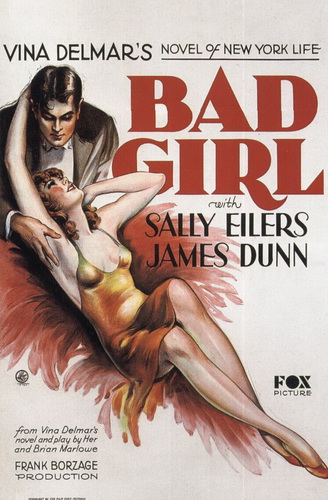When is a Lifetime film not a Lifetime film?
When it’s an Australian film, of course!
Bad Girl takes place in rural Australia. A family has just bought a new home. Peter (Ben Wispear) and Michelle (Felicity Price) are minor celebs, the type whose houses are often featured in magazines. They have a 17 year-old, adopted daughter named Amy (Sara West). When the film begins, Amy is the bad girl of the title. She has a bad attitude, she dressed in all black, she considers smoking crack as soon as they arrive at the news house, and she’s continually told that she’s being given “one more chance.” Amy takes one look around the house and decides that she doesn’t want that chance. Soon, she’s trying to run away.
Fortunately, it appears that Amy has made a new friend! Chloe (Samara Weaving) says that she lives next door. Chloe appears to be everything that Amy isn’t. Chloe is polite. She’s respectful. She doesn’t smoke crack cocaine. She doesn’t try to run away. She doesn’t regularly threaten to commit suicide. I mean, is she even a teenager!? At first, Peter and Michelle are happy that Chloe is Amy’s friend. Chloe might just be the good influence that Amy needs. But — wait a minute! What if …. what if Chloe is the bad girl!?
Well, you can probably already guess the answer to that one. Here’s one thing that I’ve learned from both the movies and real life: anyone who appears to be perfect is secretly screwed up. Chloe appears to be such an idealized friend that she might as well have psycho written across her forehead. In other words, it’s no spoiler to tell you that Chloe has an agenda of her own and soon, Amy is going to be faced with the unenviable task of trying to convince her parents that the perfect girl is actually the bad girl.
There’s a lot about Bad Girl that’s predictable and the parents aren’t particularly sympathetic. Even though Amy has, admittedly, given them reason to be concerned, they’re still way too quick to side against her as far as I’m concerned. It’s totally possible that may have been intentional on the part of the filmmakers but it still makes it difficult to really care about what happens to Peter and Michelle.
That said, Bad Girl does work when it just focuses on the relationship between Amy and Chloe. They have an interesting dynamic. Chloe wants to live what she believes Amy’s life to be while Amy secretly wants to be the person who she initially believes Chloe to be. However, neither Amy nor Chloe are really who everyone assumes that they are. Trapped out in the middle of nowhere, Amy and Chloe have both built up fantasies about what life is like out in the rest of the world. The only difference is that Amy, for all of her problems, can tell the difference between reality and fantasy while Chloe is so determined to live the fantasy that she’s willing to destroy reality. Sara West and Samara Weaving both do a great job of bringing Amy and Chloe to life. In fact, they do such a good job acting opposite each other that you kind of regret that their friendship is going to have to end. You find yourself wishing that all of their fantasies could have come true.
Bad Girl has its flaws but it worth watching for the performances of West and Weaving.












